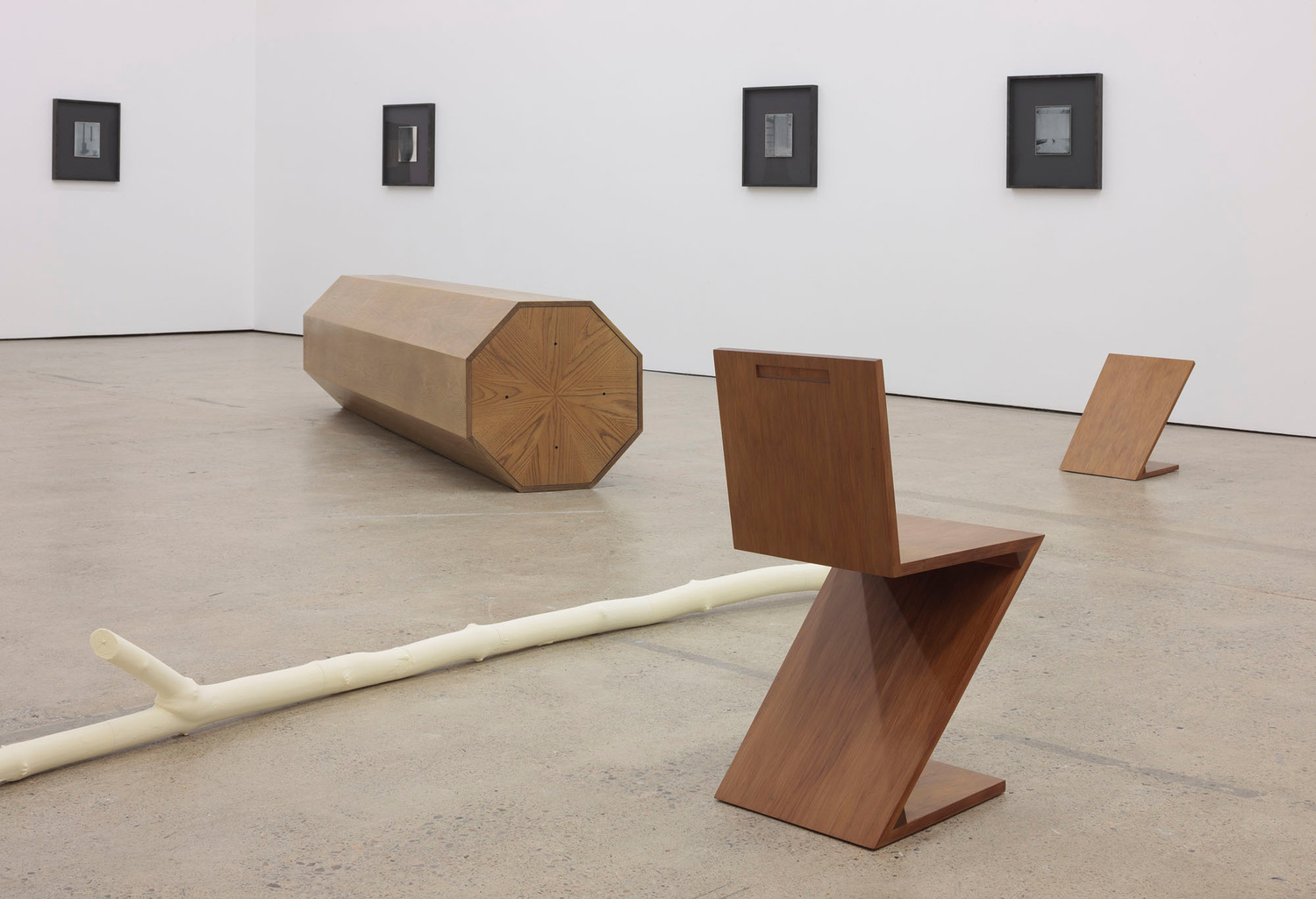Simon Starling ‘Nine Feet Later’

Simon Starling has been revisiting the history of forms and objects for two decades. Often taking up key moments in the history of modernism, Starling creates installations, films, photographs and sculptures which unearth often unacknowledged connections or migrations across space and time. His works and journeys are based on acts of transformation or hybridisation, through movement and in situ installations, and investigate the meaning making and the making of meaning.
The exhibition Nine Feet Later includes a series of site-specific daguerreotypes, titled Recursive Plates — an ongoing series that Starling began in 2014 in Casa Estudio Luis Barragán, Mexico. The Recursive Plates are made for and in particular spaces — in this case, The Modern Institute’s Aird’s Lane gallery space. The daguerreotype process is one of the earliest techniques for making photographic images and was developed in France by Louis Daguerre in the 1830s. Like doubled mirrors, each daguerreotype has been produced on a highly polished, mirror-like sheet of silver-plated metal and in turn each silvered surface now holds a ghostly image, a fragile chemical deposit that echoes the exhibition history of the space in which it was made and is now exhibited. The now phantasmagorical works that jostle for position on the reflective surfaces of the Recursive Plates — each a fragment of a larger exhibition by gallery artists installed in the space over the last three years have been reinstalled and carefully re-photographed from a number of fixed camera positions. At times congested, at others sparse, the images orchestrate a form of temporal overlay, a historical collapse or collage, that in turn connects the space’s past with its present and with the sculptural work, Nine Feet Later that occupies the space in front of the photographs.
Taking its starting point from a nine-foot long sheet of Japanese cedar wood veneer on which two Japanese scene painters were invited to paint an image of a length of bamboo (the world’s fastest growing timber), Nine Feet Later is a loose assemblage of affiliated objects that together constitute the makings of a time machine of sorts. Along with the image of fast growing bamboo (some varieties grow at 90cm a day), sits the trace of a 15 million year old tree trunk, a nine-foot long piece of petrified wood, turned to stone in something approximating a natural casting process. Somewhat younger is a plank of 45,000 year old Ancient Kauri wood, pickled for millennia in a New Zealand swamp, and here transformed into nine-feet of Gerrit Rietveld’s Zig-Zag Chair (a still-futuristic design from 1932-34). Together with an octagonal oak housing, a powerful reflecting telescope, and a copy of a birch branch — which, unlike the petrified tree trunk, was deposited layer by layer in a matter of hours in a high-tech 3D printing machine — this collection of objects — bound together by their desire to pull and push us through time – begins a conversation with the artworks (now reiterated on the mirrored surfaces of the Recursive Plates ) that formerly occupied the space — its collective memory.
Simon Starling (b. 1967, Epsom, UK) lives and works in Copenhagen, Denmark. Starling graduated from MFA at the Glasgow School of Art (1992). He was Professor of Fine Arts at the Städelschule in Frankfurt between 2003-2013.
Starling won the Turner Prize in 2005 and was shortlisted for the 2004 Hugo Boss Prize. He represented Scotland at the 50th Venice Biennale in 2003 and was included in the central exhibition Fare Mondi/ Making Worlds in the 53rd Venice Biennale in 2009. Starling has exhibited widely with solo exhibitions at Musée d’art contemporain, Montréal; Museum of Contemporary Art, Chicago; Casa Estudio Luis Barragán/Luis Barragán House and Studio, Mexico City; Museo Experimental El Eco, Mexico City; The Arts Club of Chicago, Chicago; Staatsgalerie Stuttgart, Stuttgart; Institute of Modern Art, Brisbane; Monash University Museum of Art — MUMA, Caulfield East; Tate Britain, London; Thyssen-Bornemisza Art Contemporary, Vienna; La Kunsthalle Mulhouse, Mulhouse; Tate St Ives, Cornwall; Museum of Contemporary Art, Hiroshima; MAC/VAL, Musée d’Art Contemporain du Valde- Marne; The Power Plant, Toronto; MASS MoCA, North Adams, Massachusetts; and Museum fur Gegenwartskunst, Basel.
























